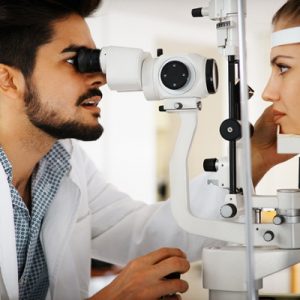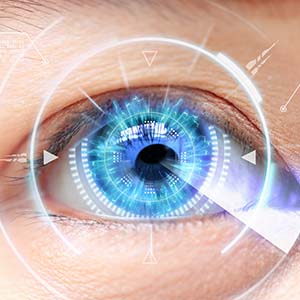Wearing multifocal lenses has increased from 64% in 2018 to over 75% in 2020.
You may notice certain changes in your vision as you get older. Many adults over the age of 40 need reading glasses to cope with presbyopia, or age-related farsightedness.
Switching back and forth between reading glasses and ordinary spectacles can be inconvenient for those who already need glasses to address myopia, or nearsightedness. Many people choose multifocal optical lenses or multifocal contact lenses to solve this inconvenience.
What are multifocal glasses?
Multifocal glasses, also known as ‘progressives’, correct vision in three distance zones: near, intermediate, and distant.
Progressive lenses lack the distinctive lines on the lenses that separate each visual zone, which distinguishes them from multi/bifocal glasses. Progressive lenses allow for a smoother transition between near and far vision.
Although progressive glasses are a popular option for older people with multiple prescriptions, multifocal contact lenses have several advantages in addition to addressing the three visual zones.
Why switch to multifocal contacts?
For starters, many patients prefer contact lenses to glasses because of their appearance and the independence they offer.
There are several types of multifocal contact lenses the different designs include:
- Aspheric multifocal lenses – these made in the same way as progressive lenses, for a smooth transition between prescriptions. One of the prescriptions, however, will be in the middle and will progressively shift outward as you move outward.
- Concentric multifocal lenses – in these lenses, concentric circles on the lens enable for a gradual transition from one prescription to the next. The rings alternate near and far corrections, similar to a bull’s eye pattern.
- Segmented bifocal lenses – Rigid gas permeable contact lenses are used in all bifocal contact lenses. They’re similar to bifocal eyeglass lenses, having the close prescription in the bottom half and the distant prescription in the top. To keep these lenses in place on the eye, the lower portion is flattened.
In short, the difference between each lies in the pattern of zone correction on the lens’ surface.
SEE RELATED: Guide to Optical Lenses
Contact an eye doctor near you to find out if multifocal contact lenses are a good fit for you.
Advantages of multifocal contact lenses
Many people may not know that multifocal lenses are also available in contact lenses.
Multifocal contact lenses have various optical advantages that progressive glasses may not have:
- No blurry side vision: When focusing on close objects, progressive glasses can cause blurred side vision, whereas multifocal contacts provide clear side vision.
- Easy to use: To read while wearing progressive glasses, you may need to angle your head downwards. When compared to progressive lenses, multifocal contacts allow you to read comfortably without dropping your head and offer a bigger reading area.
- Reading above your head: With multifocal contact lenses, reading text that is above head level is significantly easier.
- No fingerprints: Contact lenses may be easier to care for on a daily basis than glasses, especially if you don’t like those fingerprints on your lenses. Contact lenses only need to be cleaned twice a day, whereas glasses need to be cleaned several times per day.
- No distortions: Straight lines can sometimes appear curved when wearing multifocal glasses. Multifocal contact lenses rarely cause vision distortion.
- Computer screen: If you work at a computer, multifocal contact lenses may be more comfortable than progressive glasses since you can view the screen while maintaining a natural head and neck position.
- Lifestyle and sports: Multifocal contact lenses, rather than spectacles, may be better suited to an active lifestyle, especially if you enjoy contact or extreme sports.
Both multifocal glasses and multifocal contact lenses have advantages and disadvantages, and your optometrist can help you determine which is best for your eyes and lifestyle.
The adjustment period can range anywhere from a week to two months. Your eyes will adjust faster if you wear your lenses as much as possible. While adjusting to the lenses, some individuals have eye strain and headaches, so talk to your optometrist about any symptoms you’re experiencing.
LEARN MORE: Optical and Contact Lenses
If you think that multifocal lenses may be for you, be in touch with an eye doctor near you to schedule a consultation.
Multifocal lenses are an extremely successful option for presbyopia as it eliminates switching back and forth between reading glasses and ordinary spectacles.
Multifocals are available both in eyeglasses and contact lenses and your eye doctor will discuss how these lenses can enhance your lifestyle.










